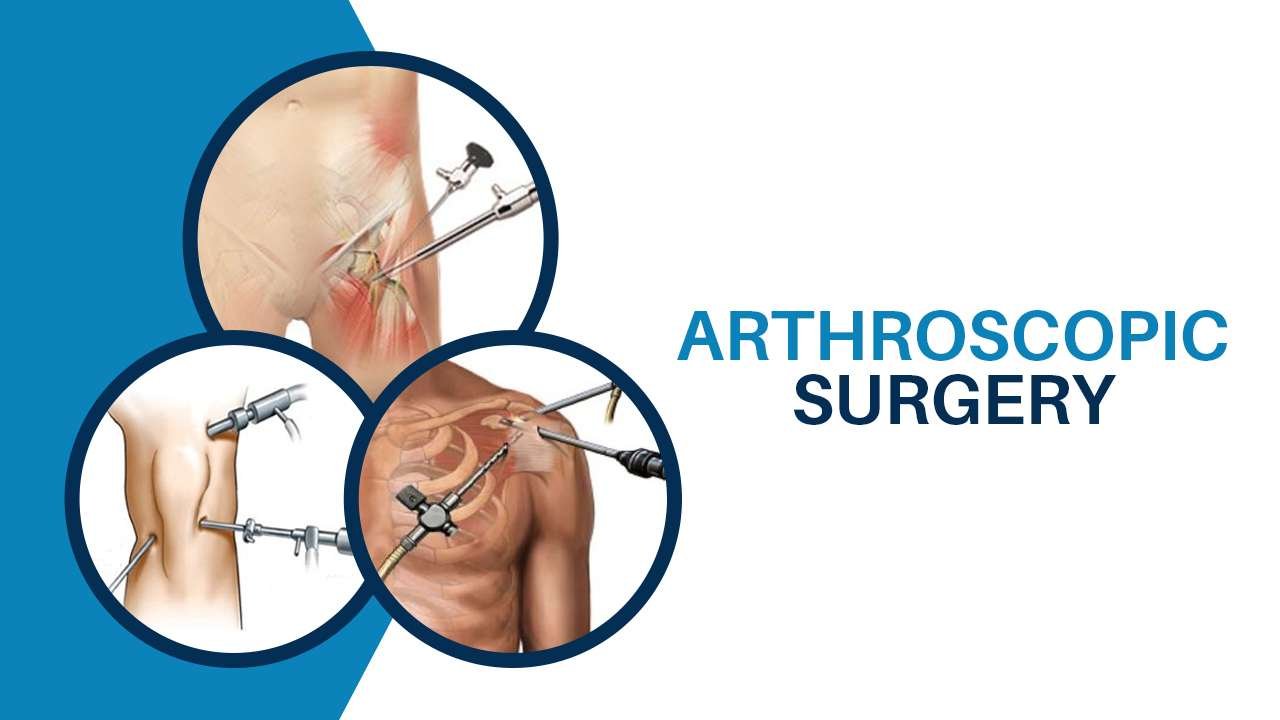

Arthroscopy is a surgical procedure that uses microscopes to view the inside of the joint. This can help Arthroscopy Surgeon in thane doctors diagnose and treat problems in the joint. Arthroscopy is used by Arthroscopy Doctor in thane most often to fix problems with the knee, but it can also be used to fix problems with other joints.
Arthroscopy Procedure is a minimally invasive Procedure which used to diagnosis and treat internal derangement of Joints. Arthroscopy Surgery in Thane is performed by the insertion of arthroscope with a camera. Knee & Shoulder Arthroscopy in are the most common joints on which Arthroscopy is performed. However, rarely, hip, elbow and wrist are also done. The procedure can be used to diagnose and treat conditions such as osteoarthritis, rheumatoid arthritis, tears in the cartilage of the knee, and meniscus tears.
Arthroscopic surgery in thane can diagnose and treat knee injuries, including….

Benefits of Arthroscopy Surgery . Arthroscopy surgery has a number of benefits, the most prominent being its ability to help people regain mobility and function in their joints. Arthroscopy is minimally invasive, which means that it causes less damage to the surrounding tissue than traditional surgery. This results in a shorter recovery time for patients.
Arthroscopy can be used to treat a variety of joint problems, including arthritis, tears in the meniscus or ligaments, and chronic inflammation. The surgery is also effective in correcting joint deformities, and Arthroscopy some time helps in avoiding knee replacement surgery. As per the Dr. Bakul Arora , Arthroscopy Doctor in Thane – Arthroscopy is is most commonly used to treat knee problems, but can also be used on other joints, such as the shoulder or hip. Despite its many benefits, arthroscopy is not without risks. Some potential complications include infection, bleeding, and nerve injury.

Arthroscopy surgery is commonly used to treat knee injuries such as torn meniscus, anterior cruciate ligament (ACL) tears, and other ligament injuries. These injuries can cause pain, swelling, and stiffness in the knee joint, making it difficult to move or bear weight.
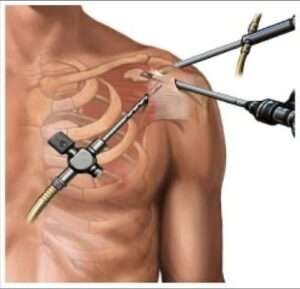
Arthroscopy surgery is also used to treat a range of shoulder injuries, including rotator cuff tears, frozen shoulder, and shoulder instability. Symptoms of these conditions may include pain, weakness, and limited range of motion in the affected shoulder.

Arthroscopy surgery can also be used to diagnose and treat hip conditions such as labral tears and hip impingement. These conditions can cause pain and stiffness in the hip joint, making it difficult to walk or engage in physical activity
The symptoms associated with these conditions can vary depending on the severity of the injury. However, common symptoms may include pain, swelling, stiffness, weakness, and limited range of motion in the affected joint. If left untreated, these conditions can cause further damage to the joint and lead to chronic pain and disability.
Early diagnosis and treatment of joint conditions can help to prevent further damage to the joint and improve outcomes for patients. Arthroscopy surgery is a minimally invasive procedure that can be used to diagnose and treat joint conditions before they become more severe. If you are experiencing joint pain, stiffness, or other symptoms, it is important to seek medical attention as soon as possible to determine the cause of your symptoms and explore treatment options. With the help of arthroscopy surgery, many patients are able to return to their normal activities and enjoy improved joint function and mobility.
This surgery is commonly used to diagnose and treat conditions affecting the knee, shoulder, hip, elbow, ankle, and wrist joints. Let’s take a closer look at the arthroscopy surgery process.
Before undergoing arthroscopy surgery, a thorough evaluation of the patient’s medical history, physical examination, and imaging tests, such as X-rays, CT scans, and MRI scans, will be conducted. The surgeon will review the patient’s medications, allergies, and any underlying health conditions that may affect the surgery or recovery. The patient may also need to stop taking certain medications or supplements prior to the surgery.
The arthroscopy surgery procedure begins with the administration of anaesthesia, which can be local, regional, or general. The surgeon then makes a small incision near the joint to be examined and inserts the arthroscopy, which projects images of the joint onto a monitor in the operating room. The surgeon can examine the joint and perform necessary repairs, such as removing damaged tissue or bone spurs, repairing torn ligaments, or smoothing out rough cartilage. Additional incisions may be made to allow for the insertion of surgical instruments.
After the surgery, the patient is taken to the recovery room to be monitored until the effects of the anaesthesia wear off. Patients may need to use crutches or a sling to immobilize the joint for a short period of time. Pain management medications, such as acetaminophen or opioids, may be prescribed to relieve pain and discomfort. Physical therapy exercises to improve range of motion, strength, and flexibility will also be prescribed.
Recovery time from arthroscopy surgery depends on the extent of the procedure and the joint involved. In most cases, patients can return to normal activities within a few days or weeks. However, athletes or patients with physically demanding jobs may require a longer recovery time. Rehabilitation exercises may continue for several months to help restore full function to the joint.
As with any surgical procedure, arthroscopy surgery carries some risks and complications. These may include infection, bleeding, nerve damage, blood clots, or a reaction to anesthesia. In rare cases, additional surgery may be required if complications arise.
Need an experienced Arthroscopy Surgeon near me? Visit Arora Clinic in Thane for top-notch arthroscopic surgery. Our expert surgeons use advanced techniques to diagnose and treat joint problems with minimal invasion. At Arora Clinic, we ensure precise and effective treatment, promoting faster recovery and less discomfort. Trust us for superior care and optimal outcomes.
Recovery after Arthroscopy : For most of the patient this surgery takes only a day. That means a patient can go home on the same day of the operation. As the incision is also small the recovery of the patient is rapid with the increasing days and thus the patient can continue to work normal in a week. Contact Arora Clinic , Best Arthroscopy Specialist Clinic in thane .
Dr. Bakul Arora Arthroscopy Surgeon in Thane specialized for Arthroscopy operation in Thane
Have more queries?
Consult us to know more.
Contact: 9372972839
Arthroscopy Surgery is a minimally invasive surgical procedure that allows a surgeon to visualize, diagnose, and treat problems inside a joint. The procedure involves making small incisions and using a tiny camera (arthroscope) and specialized tools to examine and repair the joint.
Arthroscopy Surgery can be performed on several joints, including the knee, shoulder, hip, ankle, elbow, and wrist.
Arthroscopy Surgery is commonly used to treat a variety of joint problems such as torn cartilage, torn ligaments, inflamed joint lining (synovitis), loose bone or cartilage, and damaged or diseased joint surfaces.
During Arthroscopy Surgery, the surgeon makes small incisions near the joint and inserts the arthroscope to visualize the inside of the joint. The surgeon then inserts small instruments through other incisions to diagnose and repair the problem.
Arthroscopy Surgery has several benefits compared to traditional open surgery, including smaller incisions, less pain and scarring, quicker recovery time, and a lower risk of infection.
The duration of Arthroscopy Surgery varies depending on the joint being treated and the severity of the problem. Typically, the procedure takes 30 minutes to an hour.
Arthroscopy Surgery is performed under general anaesthesia or regional anaesthesia, so patients typically do not feel any pain during the procedure. After the surgery, patients may experience some pain, swelling, and stiffness, which can be managed with pain medications.
The recovery time for Arthroscopy Surgery varies depending on the joint being treated and the extent of the procedure. In general, patients can expect to return to their normal activities within a few days to several weeks after the surgery.
As with any surgical procedure, there are risks associated with Arthroscopy Surgery, including infection, bleeding, blood clots, nerve or blood vessel damage, and adverse reaction to anaesthesia. However, these risks are relatively low
Bakul Arora is Best Arthroscopy Surgeon in Thane , He is specialised in Knee Arthroscopy , Shoulder Arthroscopy , Hip and Ankle Arthroscopy .
We are really honored to receive this and we will continue to serve the society better than ever We aim to provide the world-class Knee/Hip Replacement Surgical (Minimal Invasive Surgery) treatment to every patient suffering from knee or hip pain and at the same time make their life pain-free and happy.
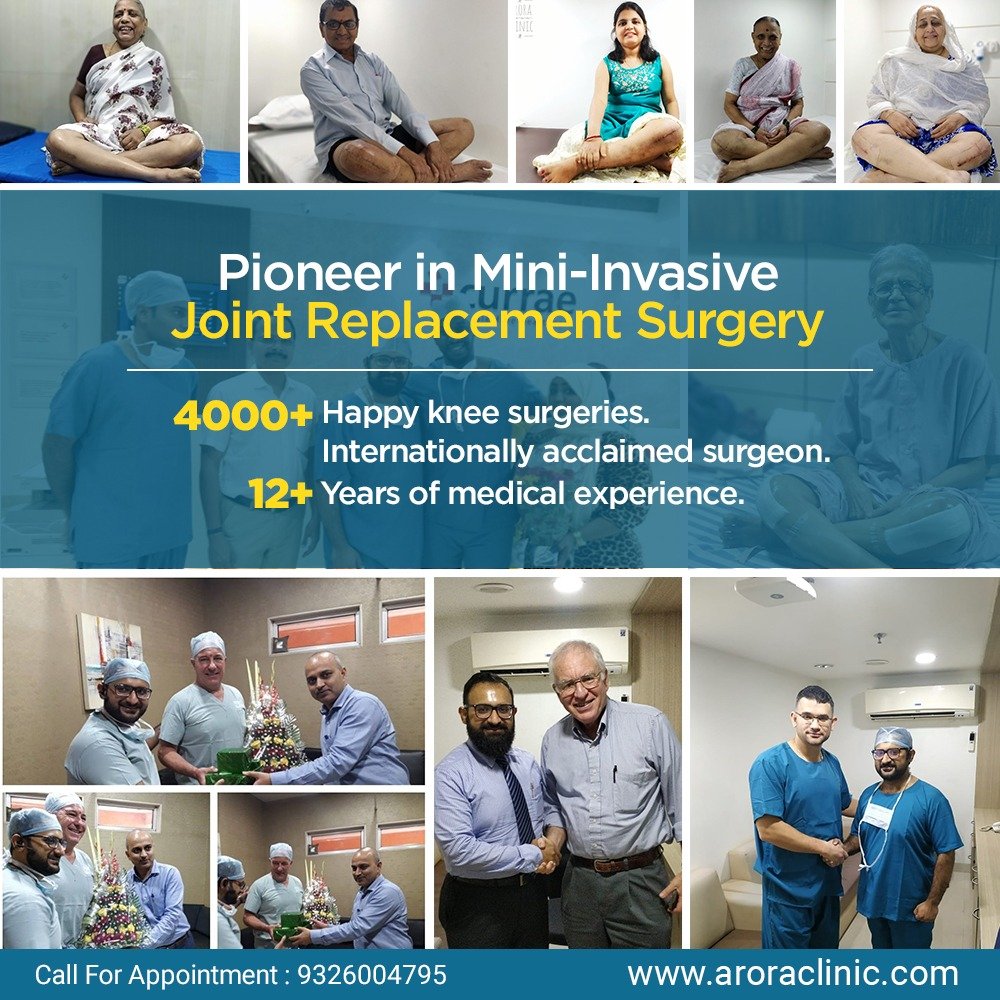
Dr. Bakul Arora’s Joint Replacement Clinic is also known as “Arora Clinic” which is located at Hiranandani Meadows in Thane, within a very convenient proximity to Mumbai. Arora Clinic dedicated clinic for Knee Replacement surgery and all kinds of Orthopaedic treatments and surgeries
The Arora Clinic is one of the most advanced Orthopaedic clinic in Thane region and dedicated to providing the best, personalised healthcare with a breadth of surgical and medical expertise. Arora Clinic offers the modern surgical treatments like “Minimally Invasive Knee Replacement Surgery” which is also called as “PAIN-LESS SURGERY” for any complex knee diseases.
Dr. Bakul Arora is a Consultant Joint Replacement & Orthopaedic Surgeon is one of the leading Knee Replacement Surgeon in Thane and Mumbai with over 4000+ successfully surgeries. Dr. Bakul Arora specialises in Mini-invasive techniques which offer multiple benefits to patients. He does the surgery using Subvastus approach for Knee Replacement surgery and Direct Anterior Approach for Hip replacement Surgery . This new techniques has many advantages for patients like its pain-less , stich-less surgery, patients walks on the same day after surgery, no blood loss, faster recovery etc.


Knee replacement is required for advanced arthritis of the knee joint, producing painful limitation of movements and restriction in activities of daily living. Knee replacement as a solution should be offered when all non–surgical methods of treatment failed and painkiller medicines and injections also failed to reduce the Knee and hip pains.
Knee replacement can be total or unicondylar, depending on the number of compartments involved. Among the total knee replacement, there are two popular designs- Cruciate Retaining, and Posterior Stabilized. The decision for the design is best taken by the operating orthopedic surgeon based on the integrity of ligaments. Patella resurfacing as a routine is a debatable subject.
Yes, most knee replacement surgeries are minimally invasive, with numerous benefits to the patient, including smaller incisions, less tissue trauma, bleeding and post–operative pain, shorter hospital stays, faster recovery, and earlier return to work and activities — in weeks rather than months. Advantages of Minimally Invasive Knee Replacement Surgery. Patients Start walking in few hours of surgery. Patients start climbing the staircase from second day of his surgery. Patients Discharge with in 3 Days from the Hospital after surgery. No blood loss during the surgery, no blood Transfusion required. Less Physiotherapy.( No Physiotherapist required for home) Less Antibiotic. Stitchless Surgery. Recovery time is just two – three week.
Bilateral knee replacement in the same sitting, can be performed if both the knee joints are damaged to the same extent, however, the medical condition of the patient, and bone quality must be kept in consideration.
Surgery through Minimally Invasive technique patients start walking on the same day and staircase climbing starts from the second day of surgery. Patients can resume his work after 3 – 4 week.
The most significant risks include Infection, Deep vein thrombosis,and Aseptic loosening of implants. The risks correlate with the co-morbid medical condition, and must be discussed with the patient before surgery.
Patients normally require hospitalization for 3-4 days in single knee replacement, and up to 5-6 days in both knee replacement surgery
A single knee replacement takes approximately 90 min- 2 hours. Both knee replacement surgery takes approx 2-3 hours.
Years ago, knee replacement surgery was reserved for elderly patients due to a high complication rate and lack of implant durability. Modern techniques have allowed orthopaedic surgeons to base surgical decisions on a patient’s pain and disability, and not necessarily chronological age. Most patients who undergo knee replacement are between the ages of 50 and 80, but surgeons evaluate patients individually and primarily on their physiologic age and demands.
Patients can resume his/her light work after discharge from the hospital, no need for rest.
Patients are given epidural anesthesia for surgery, and post op pain relief. They are expected to follow instruction from physiotherapist regarding muscle training.
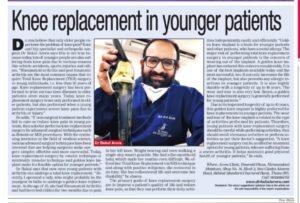

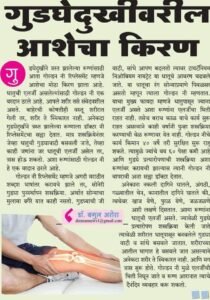

⇒ Wockhardt Hospital Mumbai Central, Mira road & Vashi
⇒ Apollo Spectra Hospital, Tardeo and Chembur
⇒ Cloud 9 Hospital, Malad
⇒ Criticare Hospital, Andheri
⇒ Arora Clinic, Hiranandani Meadows
⇒ Bethany Hospital, Vasant Vihar
⇒ Currae Hospital, Kapurbawdi
⇒ Horizon Hospital, Ghodbunder
⇒ Infinity Hospital, Majiwada
⇒ Lakecity Hospital, Khopat
⇒ Oscar Hospital, Majiwada
⇒ Drone Hospital, Bhiwandi
WhatsApp us